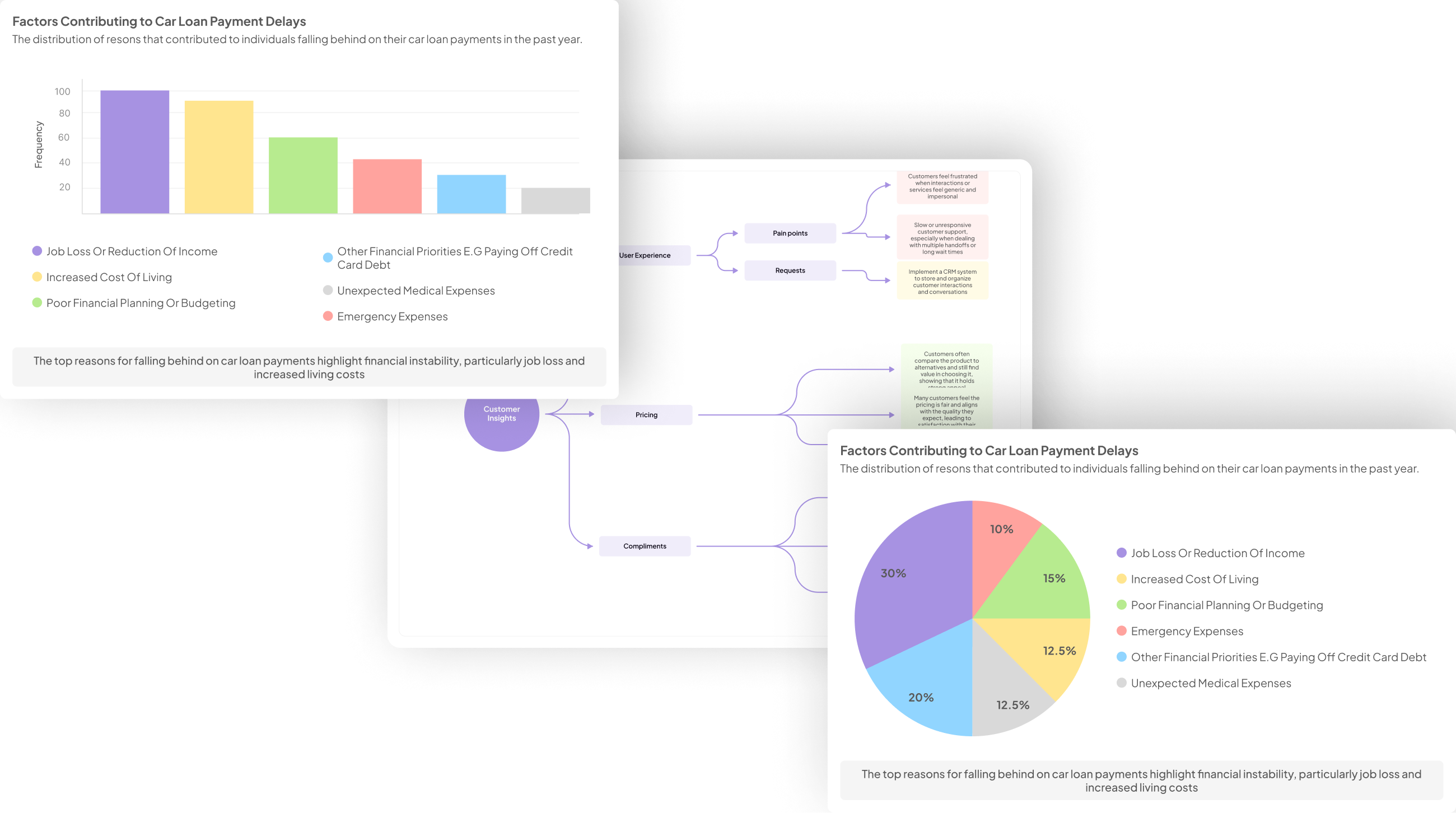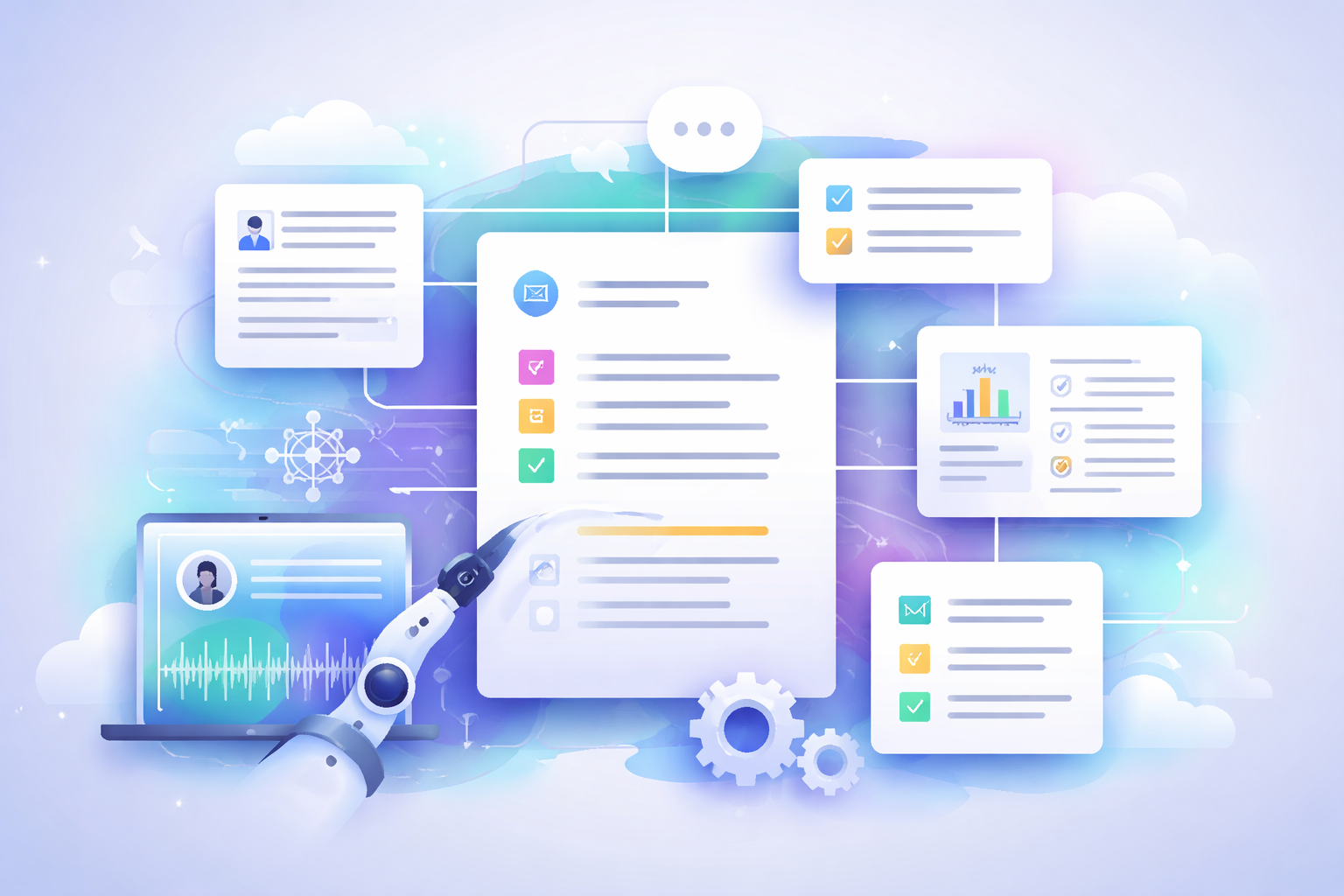Best AI tools for extracting themes from user experience interviews
-
Bella Williams
- 10 min read
Experience Theme Extraction from user experience interviews serves as a vital tool in understanding customer sentiments and behaviors. As businesses seek to improve their products and services, extracting relevant themes from user feedback becomes essential for informed decision-making. By analyzing conversations and identifying pain points and desires, organizations can transform raw data into actionable insights.
This process not only enhances product design but also fosters a deeper connection between the brand and its customers. By harnessing the power of AI, companies can efficiently analyze large volumes of interviews, uncovering patterns that drive customer satisfaction. As we delve into the importance of theme extraction, we will explore how various AI tools can streamline this process, enabling businesses to adapt and thrive in an ever-changing market.
Generate visualizations from your qualitative data. At Scale.

The Importance of Experience Theme Extraction in User Interviews
Experience Theme Extraction plays a crucial role in understanding user sentiment during interviews. By analyzing user interviews, companies can identify recurring themes and insights that shape product development. This extraction process uncovers specific user needs and preferences, making it easier for teams to focus on what truly matters to their audience. Ultimately, when organizations invest in this method, they can enhance their products to meet user expectations effectively.
When employing Experience Theme Extraction, various factors come into play. First, it allows organizations to streamline feedback collection, ensuring they capture valuable insights efficiently. Secondly, it highlights critical pain points that users experience, helping teams prioritize solutions. Lastly, this method fosters collaborative decision-making, as insights can be visually shared and discussed across departments. By integrating these aspects, businesses can transform user interviews into actionable strategies that drive growth and user satisfaction.
Enhancing Product Design Through Theme Analysis
Experience Theme Extraction is a powerful method for refining product design. By analyzing user interviews, teams can identify prevalent themes that reveal customer needs and preferences. This understanding forms the foundation for informed design decisions, leading to products that resonate more deeply with users.
To effectively enhance product design through theme analysis, consider the following approaches. First, utilize AI-driven tools to automate the extraction process, allowing for a faster and more efficient analysis of user feedback. Next, categorize findings into positive and negative themes, providing clarity on strengths and weaknesses. Finally, incorporate this insight into design iterations, ensuring that updates are grounded in real user experiences. By embedding experience theme extraction into the design workflow, teams can create more user-centric products, driving both satisfaction and engagement.
Improving Customer Satisfaction with AI-Driven Insights
Understanding customer feedback is crucial for any business aiming to enhance satisfaction. AI-driven insights play a significant role in this process. By utilizing Experience Theme Extraction techniques, companies can identify and distill key themes from customer interviews effectively. This allows them to pinpoint what users truly value and how to address their pain points.
To successfully leverage AI-driven insights for improving customer satisfaction, consider the following steps:
- Collect Comprehensive Data: Aggregate data from interviews and feedback forms to ensure a broad understanding of customer sentiments.
- Utilize AI Tools: Implement AI-powered tools to analyze this data quickly and uncover meaningful themes.
- Translate Insights into Action: Use the extracted themes to craft actionable strategies that directly address customer needs.
- Ongoing Assessment: Continuously revisit customer feedback to refine your approach and stay aligned with evolving expectations.
By adopting this methodology, companies can transform insights into impactful actions, thus enhancing customer satisfaction and loyalty.
Evaluate Performance on Customer Calls for Quality Assurance.
Best AI Tools for Experience Theme Extraction
When exploring the best AI tools for experience theme extraction, it's crucial to recognize their ability to streamline data analysis from user interviews. These tools leverage natural language processing and machine learning algorithms to identify key themes, sentiments, and patterns within qualitative feedback. Users can quickly glean actionable insights, making the process more efficient and effective.
Among the leading options, tools like MonkeyLearn and NVivo stand out for their user-friendly interfaces and robust analytical capabilities. MonkeyLearn provides text analysis features that help categorize user feedback, while NVivo offers complex data visualization options. Other notable mentions include Kea, which excels in summarizing conversations, and Taguette, known for its simplicity in tagging crucial quotes and themes. By utilizing these AI-driven solutions, teams can enhance their understanding of user experiences and make informed decisions to improve their products or services.
Insight7: Leading the Way in UX Analysis
Effective user experience (UX) analysis hinges on the insightful extraction of themes from user interviews. Insight7 has emerged as a leader in this domain, providing innovative AI tools that simplify the process of understanding diverse user experiences. By automating the extraction of common threads from extensive interview data, organizations can gain invaluable insights into user needs and preferences.
The platform addresses major challenges faced by businesses today, such as the time-consuming nature of manual analysis and inefficient collaboration. With AI-driven capabilities, Insight7 enables teams to swiftly identify key themes and translate them into actionable strategies. This transformation ultimately empowers organizations to stay ahead of competitors, engage with customers more effectively, and enhance product development processes. By harnessing cutting-edge technology for experience theme extraction, businesses can ensure they remain responsive to user feedback and adapt their offerings accordingly.
Additional Tools for Effective Theme Extraction
To facilitate effective theme extraction during user experience interviews, consider integrating several specialized tools. These tools can streamline the process, ensuring you capture valuable insights efficiently. For instance, MonkeyLearn offers natural language processing capabilities that help identify trends in user feedback. This tool categorizes text data and allows for quick sentiment analysis, making it easier to understand user sentiments.
Similarly, NVivo takes a qualitative approach, providing advanced coding capabilities to analyze transcripts systematically. It allows researchers to organize and visualize data, enhancing the depth of analysis. Another noteworthy tool, Kea, simplifies project management by enabling users to upload and transcribe files, facilitating easy access to consolidated feedback. Lastly, Taguette serves as an excellent resource for teams working collaboratively, allowing for easy tagging and sharing of insights. Utilizing these additional tools can significantly enhance your work in experience theme extraction, driving richer, more actionable outcomes.
- MonkeyLearn
Experience Theme Extraction is critical for understanding the nuances of user experience interviews. A powerful tool in this realm effectively organizes and analyzes qualitative data, allowing researchers to uncover emerging themes in conversations effortlessly. By transforming unstructured data into actionable insights, users can enhance product design and make informed decisions.
This tool utilizes machine learning algorithms to identify keywords, phrases, and sentiments in interviews. It supports researchers by clustering related comments, providing a clearer picture of user sentiments. Additionally, the interface is user-friendly, making it accessible even for those with limited technical expertise.
Researchers benefit from rapid analysis and visualization features, enabling them to focus on interpreting results rather than getting bogged down in data management. By streamlining the process of Experience Theme Extraction, this tool empowers teams to capture essential feedback and drive meaningful improvements.
- NVivo
NVivo stands out as a compelling tool for facilitating Experience Theme Extraction from user experience interviews. It empowers researchers to organize and analyze qualitative data efficiently, making it essential for uncovering actionable insights. With NVivo, users can seamlessly import audio files and transcripts, creating projects that consolidate their data for in-depth exploration.
The platform allows for sophisticated questioning, enabling users to discover patterns within various themes. For instance, when analyzing comments pertaining to a specific product, NVivo can extract relevant quotes and summarize findings in an organized manner. This capability not only saves time but also enhances the accuracy of theme extraction, making it an invaluable resource for teams seeking to enhance product design and customer satisfaction.
Through its intuitive project setup and data visualization features, NVivo offers a structured approach to thematic analysis that is indispensable for any research initiative.
- Kea
Kea stands out as a powerful tool in the realm of Experience Theme Extraction, specifically tailored for analyzing user experience interviews. Its design emphasizes simplicity and effectiveness, making it accessible to researchers seeking deeper insights from qualitative data. By harnessing advanced algorithms, Kea allows users to identify recurring themes and trends effortlessly, ultimately enhancing their understanding of user needs.
This tool promotes collaborative analysis, encouraging teams to share insights and debate findings in real-time. Such functionality is vital for organizations looking to foster a culture of continuous improvement based on user feedback. With Kea, users can transform raw interview data into actionable business strategies, paving the way for innovation and better customer interactions. By prioritizing user-centric insights, Kea serves as an essential resource for anyone aiming to elevate their experience theme extraction efforts in today’s competitive landscape.
- Taguette
Taguette stands out as a remarkable tool in the realm of Experience Theme Extraction. Its intuitive design enables users to organize and analyze qualitative data from user experience interviews efficiently. When employing this tool, you can easily highlight key themes and categorize nuances within the conversation, allowing you to uncover valuable insights that may otherwise remain hidden.
One of the primary benefits of utilizing this tool is its user-friendly interface, which streamlines the entire process. Users can effortlessly tag segments of text, making it easier to identify patterns across different interviews. Furthermore, Taguette supports collaboration, enabling teams to share findings and collectively engage in the analysis process. This collaborative aspect not only enhances understanding but also fosters diverse perspectives, ultimately enriching the insights derived from user interactions. Through these features, Taguette empowers researchers to extract meaningful themes and drive informed design decisions.
Conclusion on Experience Theme Extraction Using AI Tools
Experience Theme Extraction enhances the understanding of user feedback, laying the foundation for better decision-making. As AI tools evolve, they offer more efficient ways to identify trends and patterns from user experience interviews. By analyzing conversations, these tools can extract key themes that highlight user pain points and preferences effectively.
In conclusion, utilizing AI for Experience Theme Extraction not only streamlines the analysis process but also ensures more accurate insights. As organizations strive to improve customer experiences, integrating these AI tools will be instrumental in developing solutions that resonate with users, ultimately driving engagement and satisfaction.







